Women-Artists Building History: A Special Feature for Women’s International Day
For too long, the world of art has been a boys’ club, but a new generation of female artists has shattered the glass ceiling and continues to expand upon the rich history of art. In this exciting and groundbreaking era, pioneering female artists like Valie Export revealed new ground in video art, while Ana Mendieta created stunning performances engaging nature. Join us on a journey through the history of female artists who dared to dream beyond the limits set by society.
Hito Steyerl
Hito Steyerl (b. 1966) is a master at using her writing practice, films, and performative lectures to examine the role of the image in our ever-expanding global and technological world.
By fusing elements of documentary and film essay, Steyerl delves into the realms of globalization, political economies, visual culture, and the state of art production. With her thought-provoking works, she challenges us to reconsider our relationship with images in this modern age.
Hito Steyerl_How Not To Be Seen_ A Fucking Didactic Educational .MOV File from liza on Vimeo.
Sanja Iveković
Sanja Iveković’s artistic practice has been characterized by a strong feminist and activist stance since the 1970s. Her work consistently engages with gender and political issues, and her uncompromising approach has been a significant influence on generations of artists and curators.
Iveković frequently draws on personal experiences and circumstances contrasting them with official histories, so that to examine female identity, violence against women, state oppression, and the ways in which ideology is manifested through mainstream media.
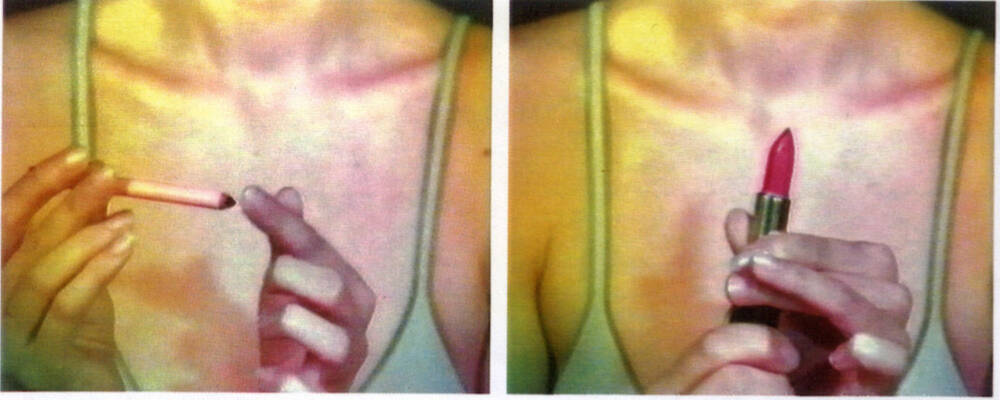
Valie Export
In 1967, Austrian artist VALIE EXPORT changed her name from Waltraud Hollinger (nee Lehner) to reject the patriarchal identity given to her by her father and former husband, thus to establish herself as a recognizable feminist artist.
Her early performance works involved direct interaction with her audience. In her piece TAP and TOUCH Cinema (1968-71), EXPORT wore a model of a curtained movie theater on her naked torso and stood on the street. Passersby were invited to reach through the curtains and touch her breasts, providing them with the opportunity to experience real womanhood, rather than the idealized femininity often depicted on the silver screen.
In another cinema-based performance, Action Pants: Genital Panic (1969), Valie walked through an experimental film theater wearing crotchless pants, putting the seated audience at eye-level with her exposed vagina.
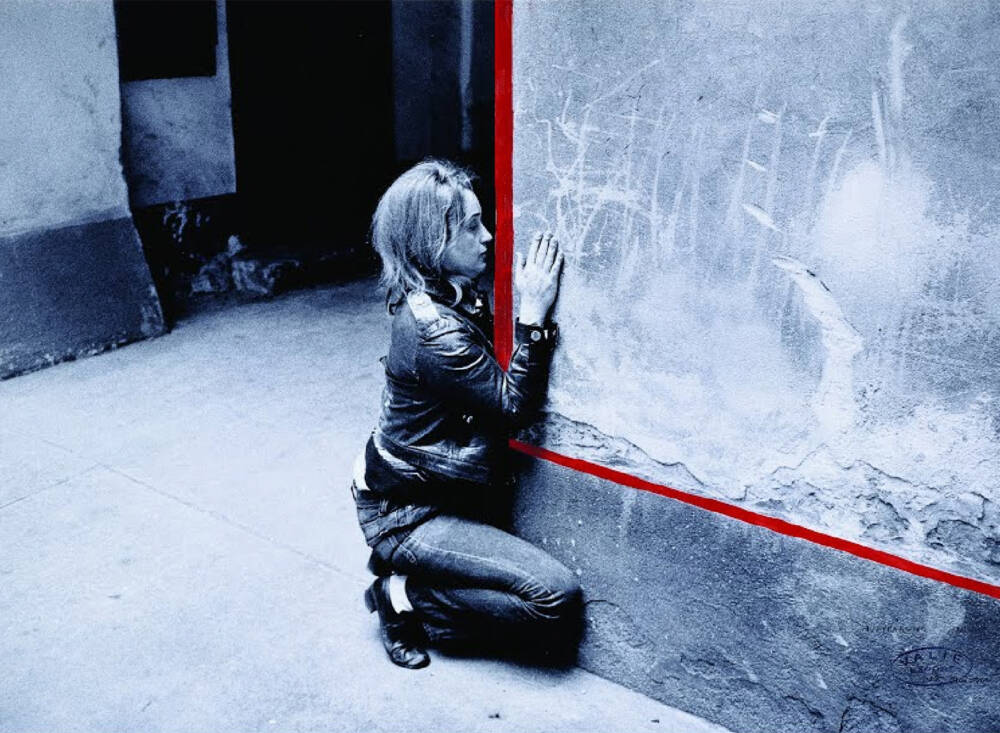
Katharina Detzel
Detzel (1872, Luxembourg – ?) was put in a mental institution in 1907 after performing abortions and sabotaging a railway line as a political protest. Detzel also worked on a human figure with wings and made a life-sized male doll out of the mattress ticking and straw from her bed, which she’d pummel when she was angry or dance with when she felt happy.
In her struggle against social injustice, she wanted to establish a home for infants and compiled a pamphlet against prostitution. After 19 years, she finally managed to escape from the institution, but in 1939 Detzel was arrested again. It is still uncertain if she survived the war and the Nazi Euthanasia Program.
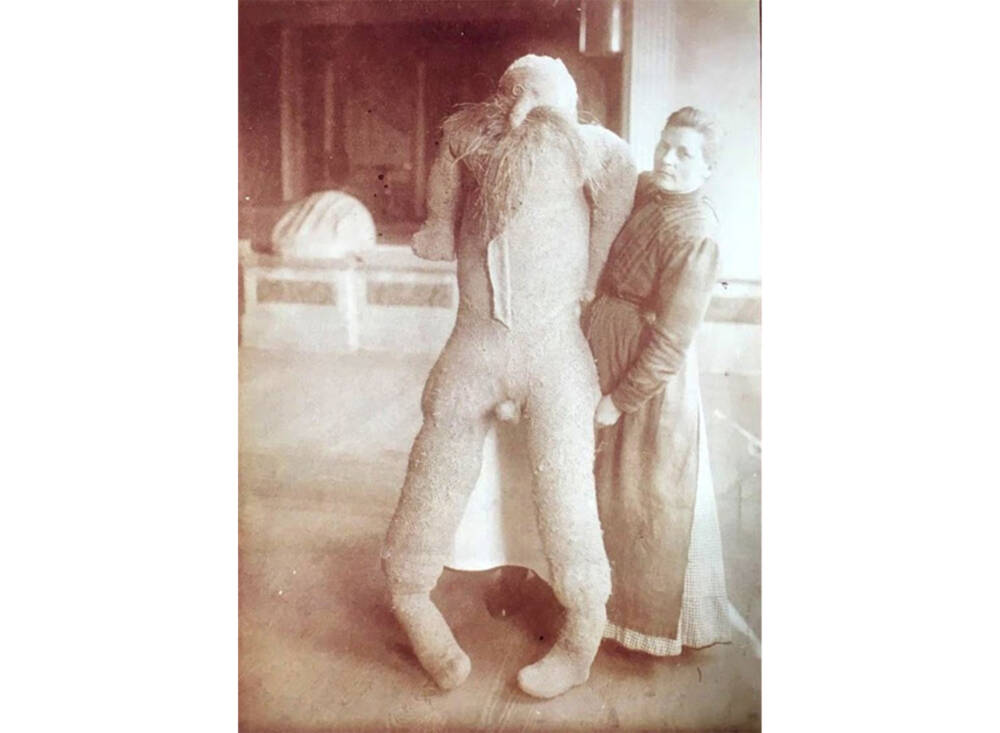
Ana Mendieta
When Mendieta was 12 years old, she left Havana due to political upheaval and went to an orphanage in Iowa, along with many other Cuban children. Since then, her artwork focuses on displacement and explores her national and gender identities. Mendieta used her own body to create performance pieces that are associated with Conceptual Art, Feminist Art, and Land Art.
Today, her artistic legacy is entangled with the story of her untimely death at age 36. In 1985, Mendieta fell out of the 34th-floor window of the apartment she shared with her husband, minimalist sculptor Carl Andre. Andre was charged with her murder but ultimately acquitted.
One of her most famous works, the “Silueta Series” (1973-77), involved imprinting her body onto natural landscapes in Mexico and Iowa and filling the outlines with organic materials such as flowers, branches, and moss.
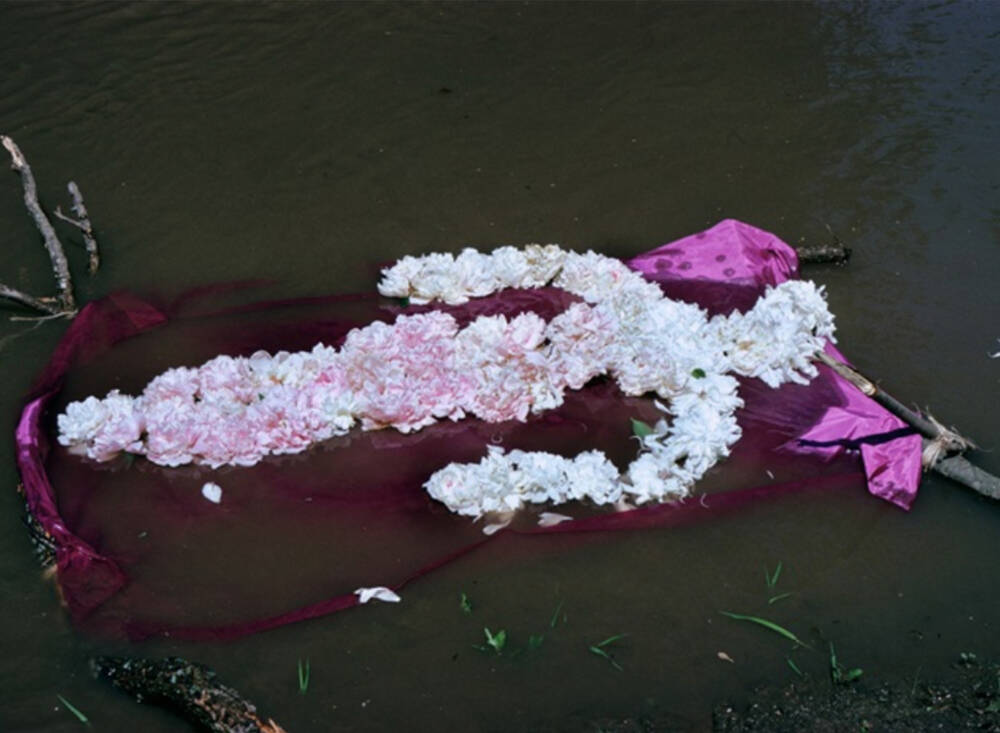
Mary Beth Edelson
Mary Beth Edelson, an artist and activist, who was a prominent figure of the feminist art movement in the 1970s. Her performances involved using her body to embody ancient goddesses. Edelson was a strong advocate for feminist causes throughout her life. She was organizing protests against the underrepresentation of women artists in museums and exhibitions.
In her photo collage Some Living American Women Artists (1972), she swapped out the faces of Christ and the apostles in Leonardo da Vinci’s The Last Supper (1495) for those of influential female artists including Yoko Ono, and Louise Bourgeois, and pasted the photos of 69 other female artists around the work’s border. Distributed as a poster, the piece served as a criticism of misogyny in the art world.
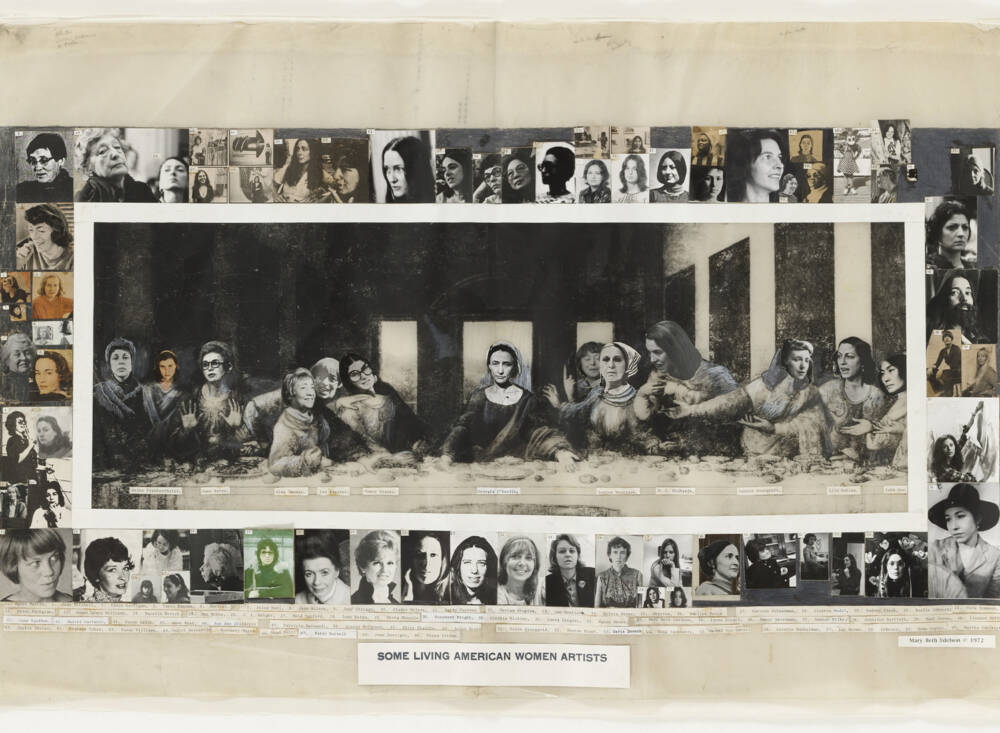
Maria Pinińska-Bereś
Before the emergence of Western feminist art, Pinińska-Bereś was already offering a critique of male depictions of women, male desires, and the idealization of women. Pinińska-Bereś aimed to use irony and gentle eroticism to expose the societal roles assigned to women.
Although Pinińska-Bereś did not wish to be associated with feminism, following a negative response to her early ‘soft’ works, she is nevertheless considered one of the feminist pioneers in Poland alongside her slightly younger fellow Polish artists Natalia LL and Ewa Partum.

Cover credits: (c) Mary Beth Edelson Honey, It’s A Joke, 1992; Mary Beth Edelson, Head Spirit (Woman Rising series), 1973